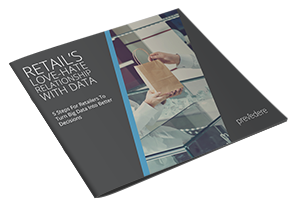Last Updated: June 22, 2018
We have outlined solutions to the greatest issues facing your retail data and analytics strategy. Your CFO will thank you.
Sports Authority, Circuit City, Borders, Blockbuster – the growing list of once popular retailers that have become extinct in today’s digital age is enough to spark fear in any retail executive. The most common place for retailers to turn to avoid a similar fate is really understanding their data and analytics strategy. It is not enough to counteract the forces that are driving so many retailers to close stores. It is not the full story.
Certainly, data and analytics can have exponential benefits on a company’s bottom line results. However, retailers often begin to collect and analyze big data expecting miracles, with no real strategy in place. At worst, this approach can lead to huge expenses with no results, and at best, it leads to a significant time investment for only incremental success.
Instead, retailers should adopt a data and analytics strategy that answers the most pressing business questions and provides insights that are truly actionable. The Retail’s Love/Hate Relationship With Data Playbook outlines solutions to the most common hurdles organizations face determining the most important data to impact their business.
Data and Analytics Strategy Success
Prevedere suggests beginning with the end in mind.
Many retailers often fall into the trap of “analysis paralysis” due to the vast amounts of data they have and the seemingly endless number of questions to answer. By honing in on the end goal, whether it includes optimizing marketing spend, regional understanding differences or better-predicting foot traffic, retailers can focus on answering the questions that matter most to improving business performance through establishing an effective data and analytics strategy.
Prevedere also recommends that retailers are launching a data and analytics strategy leverage external factors.
There are several influences beyond a company’s walls that impact performance from weather to the economy to the cost of supplies. Frequently, retailers turn only to their internal data for a view of performance, which is an incomplete and inaccurate picture. Smart, data-driven retailers, should leverage leading external indicators to foresee headwinds and plan accurately for the future.
 For an in-depth discussion of the remaining five-steps to turn big data into better decisions, including a list of the primary leading indicators affecting the retail industry, download Prevedere’s retail analytics playbook here.
For an in-depth discussion of the remaining five-steps to turn big data into better decisions, including a list of the primary leading indicators affecting the retail industry, download Prevedere’s retail analytics playbook here.